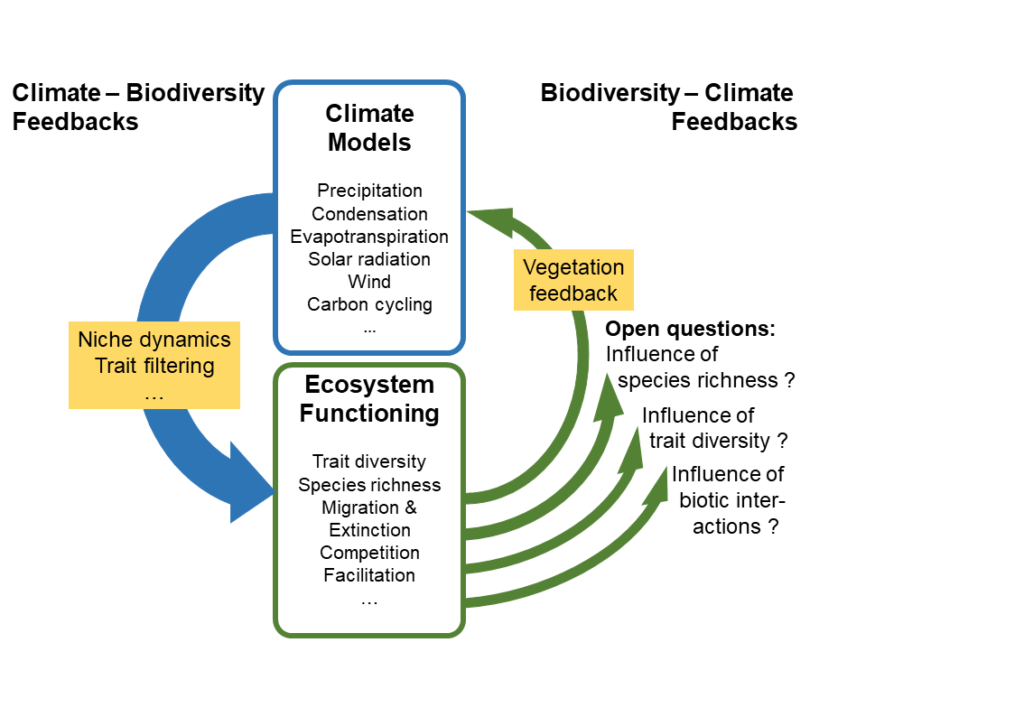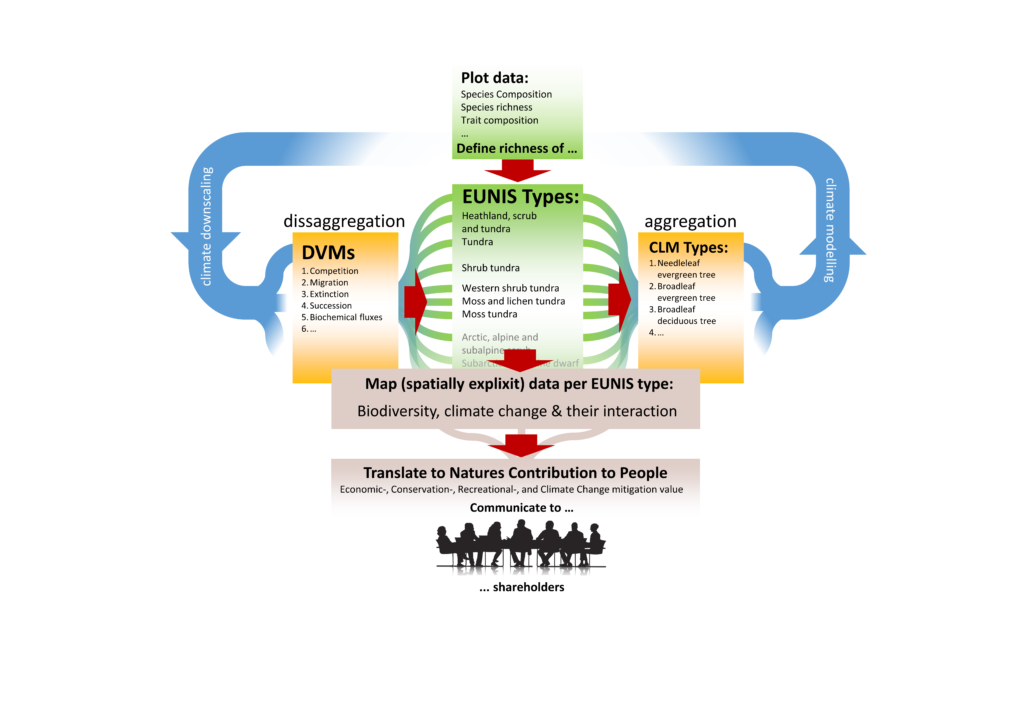Ecosystem – Climate feedback
Terrestrial ecosystems cycle energy, water, chemical elements, and trace gases, and through this influence the climate. To mitigate the effects of global climate and biodiversity change, an improved understanding of the links between these two aspects is essential. Many research projects have studied the effects of climate variation and climate change on biodiversity and related Nature’s contributions to people. However, little is known about the effects of biodiversity on climate and to what degree this feedback can be used to mitigate climate change. For example, a recent study has quantified that the projected warming will likely add an additional 0.1 – 0.25 °C due to increased methane emissions from natural wetlands by the end of the 21st century. But biodiversity change can also mitigate climate change effects through carbon sequestration. More species-rich forests accumulate more biomass, which could result in a 2.7% decrease in carbon storage per year if tree richness in forests decreased by 10%. In summary, biodiversity effects on climate are manifold, but are still widely understudied. This is partly due to the fact that climate or Earth System Models (ESM) only use a very simple parametrization scheme of biodiversity due to computational limitations. ESMs only differentiate between very broad vegetation classes, such as broadleaved and needle leaved forest or simplified plant functional types. Such simple classifications of the functional diversity do not well represent the processes relevant for addressing biodiversity feedbacks to the atmosphere.

What we do
To fully assess a climate-biodiversity feedback, FeedBaCks will specifically focus on both, the effects of biodiversity on climate and on nature’s contributions to people. Combining climate models with biodiversity models is however challenging, as i) the combined expertise from a wide variety of fields is required, ii) different model structures and formats need to be combined, and iii) many of the processes linking biodiversity to climate are still unknown. To study feedbacks of biodiversity on the climate system FeedBaCks will use downscaled Earth System Model (ESM) output and link it to dynamic vegetation and biodiversity models, disentangle the effects of biodiversity, and subsequently feed them back into the ESM to quantify their effect on the climate system. Biodiversity will be quantified by building and benchmarking an effective vegetation classification that is linked to specific plant functional traits, and combined with a set of harmonized plant diversity data across Europe. Based on the quantified effects of biodiversity on the climate system, we will be able to quantify ecosystem functioning and nature’s contributions to people, and provide quantitative predictions of their influence in the biodiversity-climate system.
How we do it
An explicit quantification of the effects of ecosystems on the climate system requires considering all major causal relationships between the different aspects of the system. Such a model setup (Fig. 2) practically represents a low resolution earth system model (COSMO-CLM2) that is tailored to ingest information on biodiversity from high resolution, vegetation dynamics, and biodiversity simulations using LPJ-GUESS and Fate-HD. The assessment of biodiversity and ecosystem effects on climate in such a model system can be achieved by modifying different system components. A control run of the full model (Fig. 2 top), accounting for all effects will serve as a baseline benchmark. In a series of simulation runs (Fig. 2 bottom), different aspects of the system can be held constant or randomized in the model and the effect of different aspects will be generated as model output (e.g. declines in temperature, or precipitation). The different model runs will be decided on by a consortium of stakeholders and modelers.

Bridging the gap in resolutions
On of the main challenges in this project is to bridge between the different spatial resolutions at which regional climate models are run, and at which dynamic vegetation models are running (Fig 3). To bridge between COSMO-CLM2 and the vegetation models, we will use the CHELSA downscaling algorithm specifically tailored to ingest EURO-CORDEX data. This will provide the dynamic vegetation models with the kilometer scale climate data they need. To bring the resolution back up to the 11km needed for COSMO-CLM2 we will use the EUNIS vegetation type approach to aggregate the data into vegetation classes needed by the regional climate model COSMO-CLM2.
